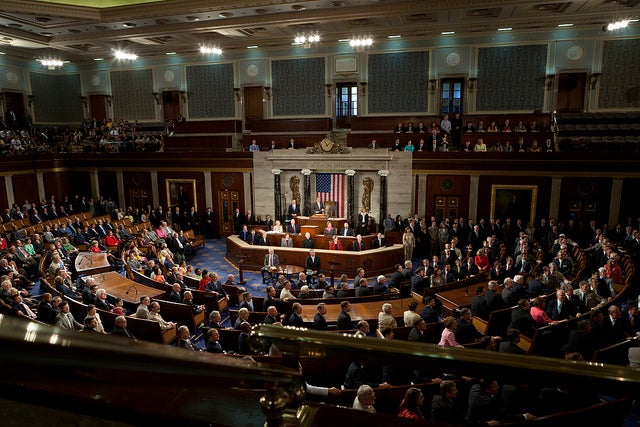In a refreshing break from tradition, the House Appropriations Committee approved a $967 billion discretionary spending plan that would stay within the fiscal year 2014 sequestration spending levels.
The measure would protect defense from further cuts and instead deliver the total savings through reductions to domestic discretionary programs. It was in keeping with the instructions provided in the House budget, which was passed earlier this year.
Now it is up to chairman Harold Rogers (R–KY) to deliver the 12 spending bills that must be passed into law by September 30, the end of the federal fiscal year. These bills authorize annual spending for everything from national defense to foreign aid.
Regrettably, Rogers seemed less than enthusiastic about the necessary spending cuts, reportedly saying the committee’s hands were tied. “It is my sincere hope that there will soon be a budget compromise that will undo the damaging sequestration law and give us a single, common top-line allocation with the Senate.”
It’s always easier to spend money than to cut. No doubt Senate Appropriations chairwoman Barbara Mikulski (D–MD), who is planning to ignore sequestration, will have the easier job. The Senate’s total appropriations funding, at $1.058 trillion for 2014, is $91 billion above the House level. Mikulski closes some of the deficit gap by hiking taxes. So the Senate once again gets to coast; meanwhile, Rogers will have his work cut out for him.
But this is precisely what Congress should do—stick with the Budget Control Act (BCA) agreement to cut spending. It promised these spending cuts in exchange for the $2.1 trillion increase in the debt limit. And after all, the BCA is partially responsible for today’s temporary improvement in spending and the deficit, so moving away from it is totally unacceptable.
What is crucial, however, is that Congress comes to an agreement on how to reprogram the sequestration cuts, which fall disproportionately on defense. As Heritage defense expert Baker Spring explains:
Public perception may be that the sequestration cuts to the defense budget is about eliminating waste and inefficiency in the Department of Defense (DOD). In reality, sequestration will result in the loss of military capabilities.
The House committee’s spending plan would adhere to the sequestration level top line for discretionary spending while protecting defense from further cuts. This is an important achievement, as military furloughs planned for later this summer are not enough to protect against further deterioration of military readiness. As defense analyst Brian Slattery explains:
Sequestration has gone into effect, but its effects are still largely unknown. However, the Armed Forces’ service chiefs have begun to describe what is in store under such dramatic reductions. For example, Army Chief of Staff Raymond Odierno explained that reductions to maintenance and training will put the Army “on the outer edge of acceptable risk for our future force and our ability to meet our National Security Strategy.”
The House should lead the Senate by sticking to the standard that it set in its budget and the Appropriations committee reaffirmed:
- Adhere to the spending reductions in the Budget Control Act, including sequestration;
- Lessen the damage to national defense, the federal government’s core constitutional function; and
- Do not raise taxes.































